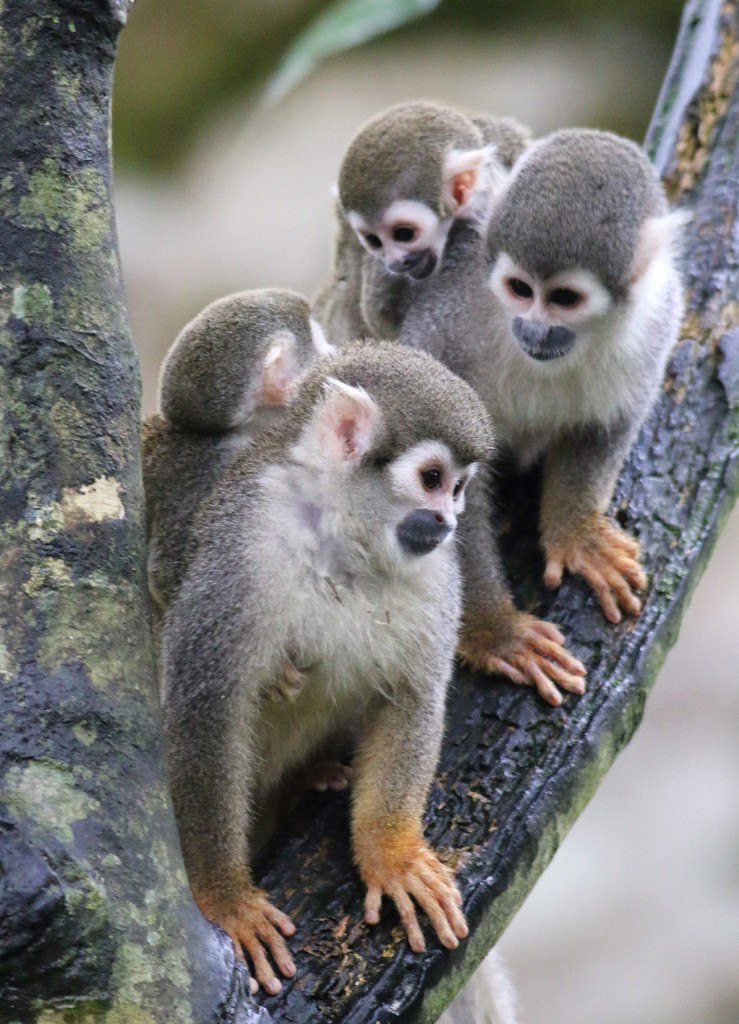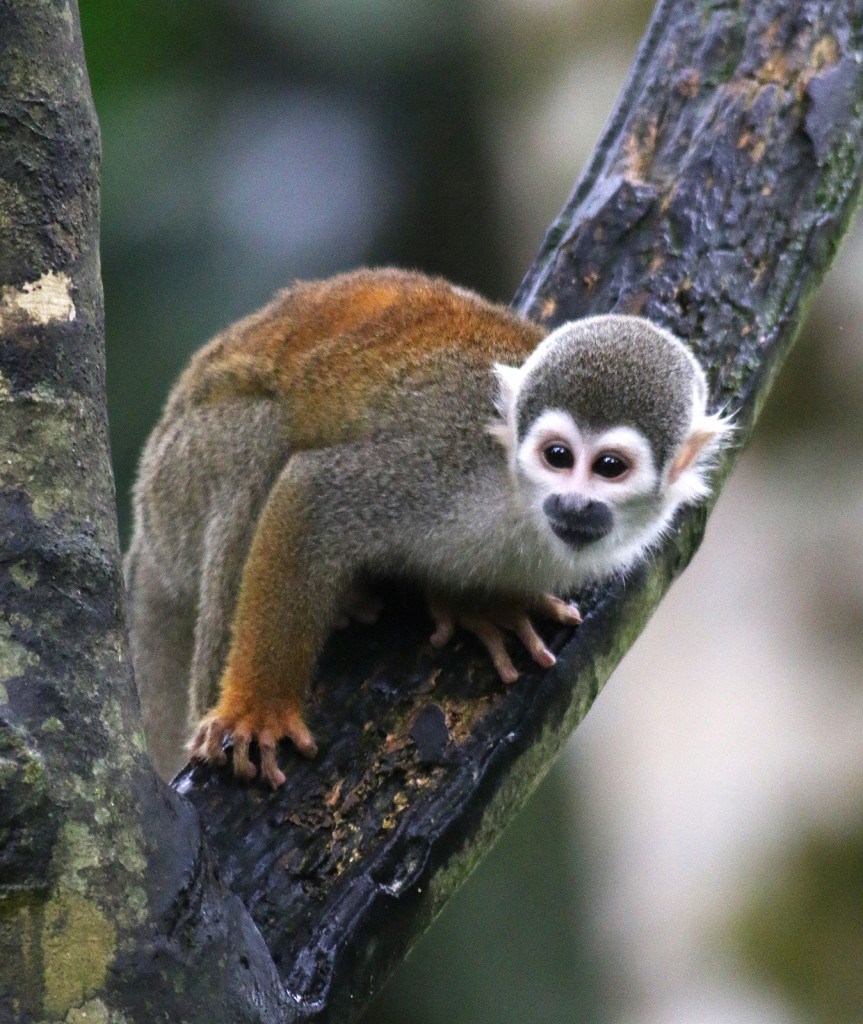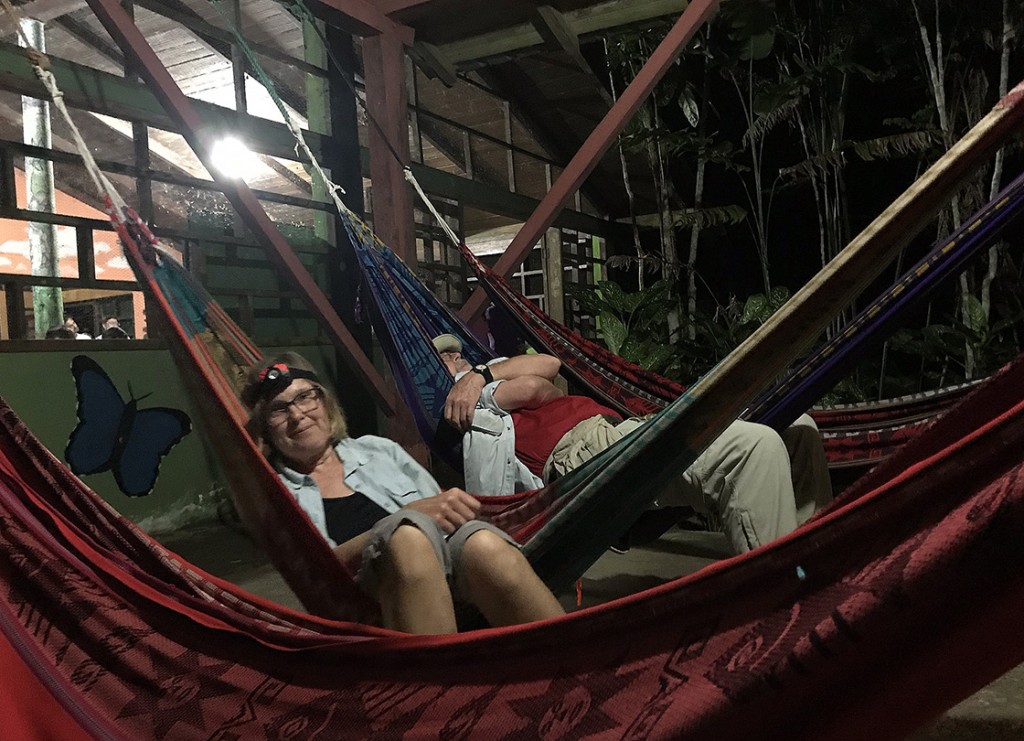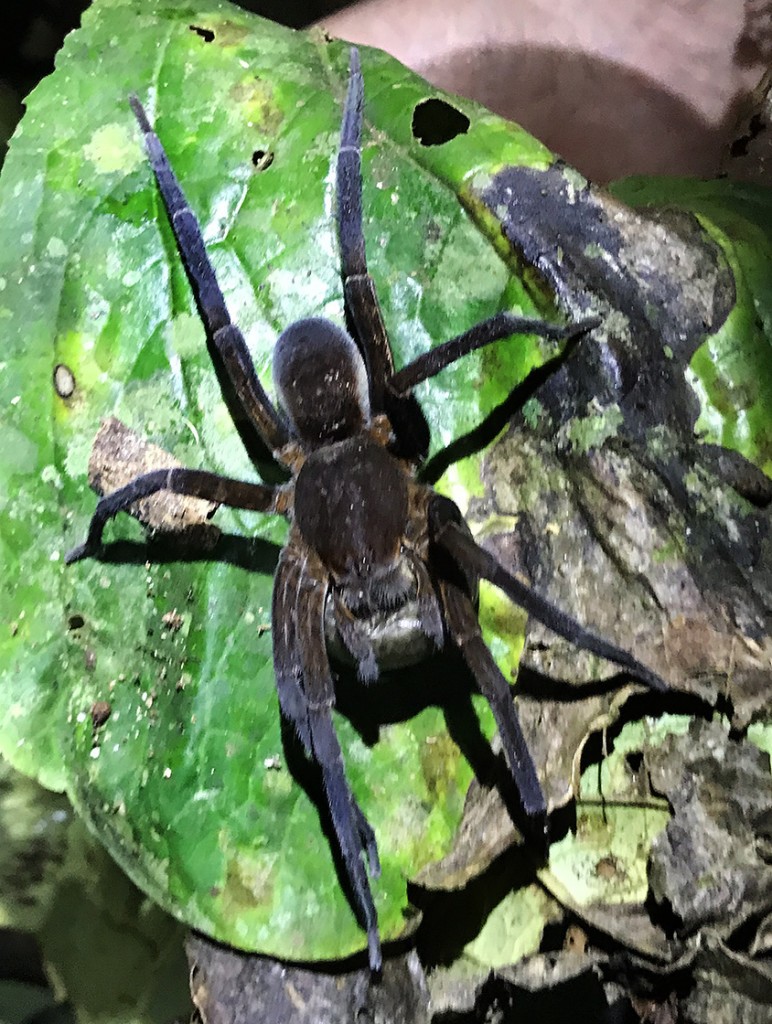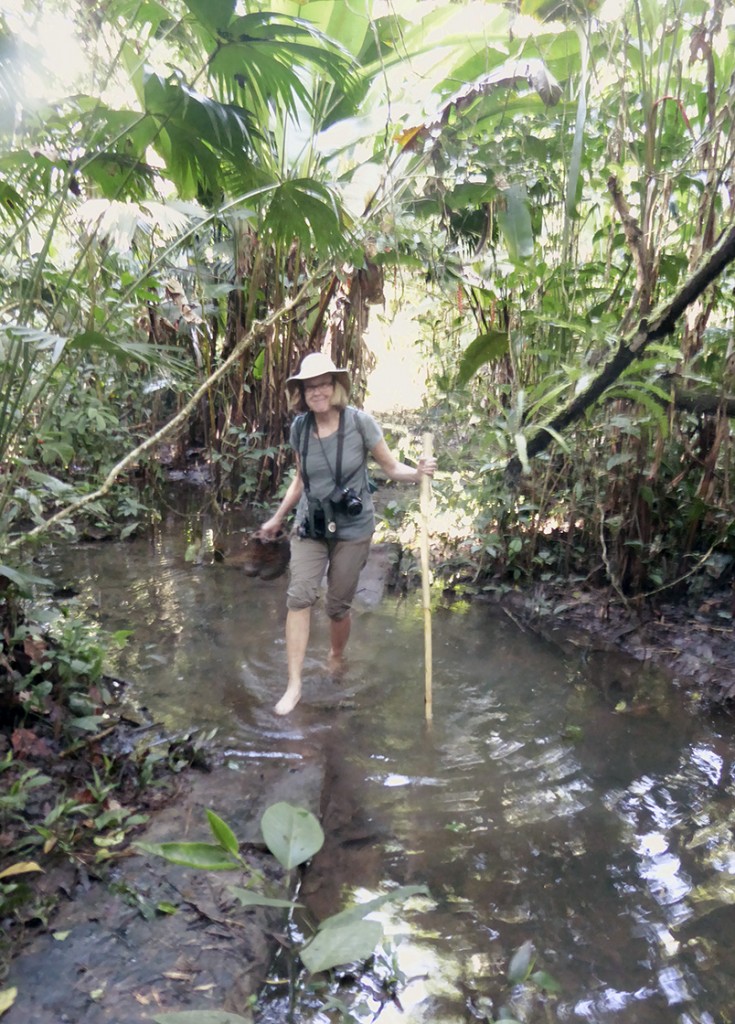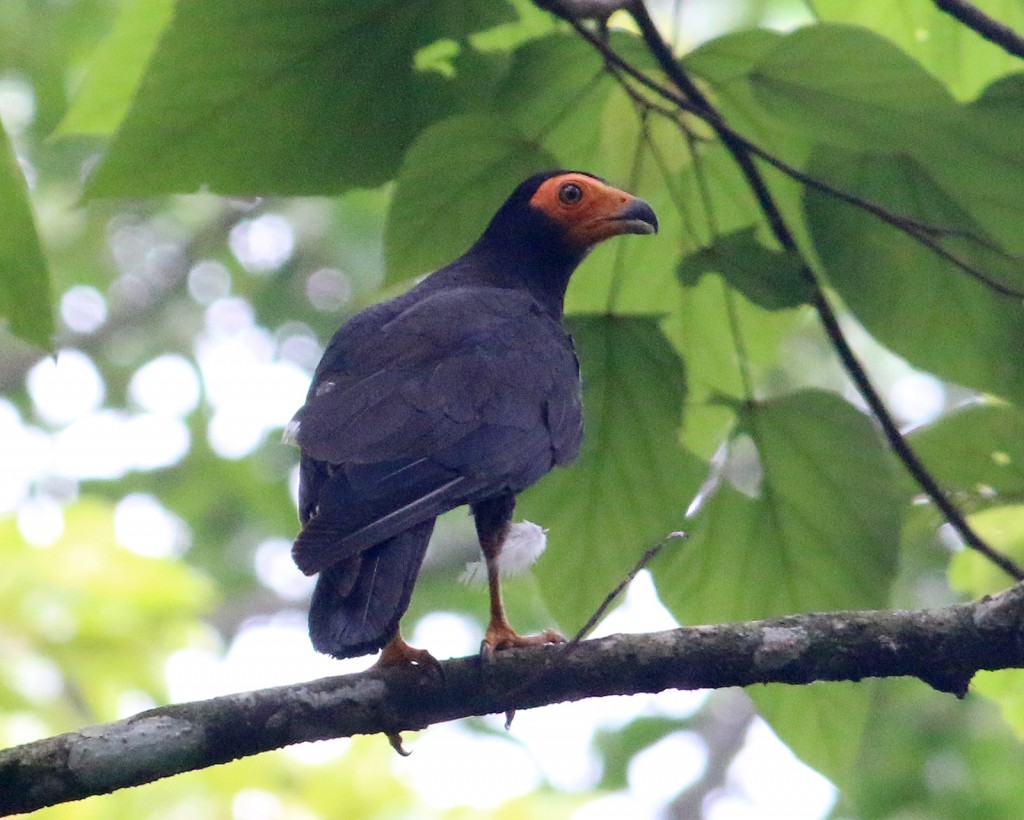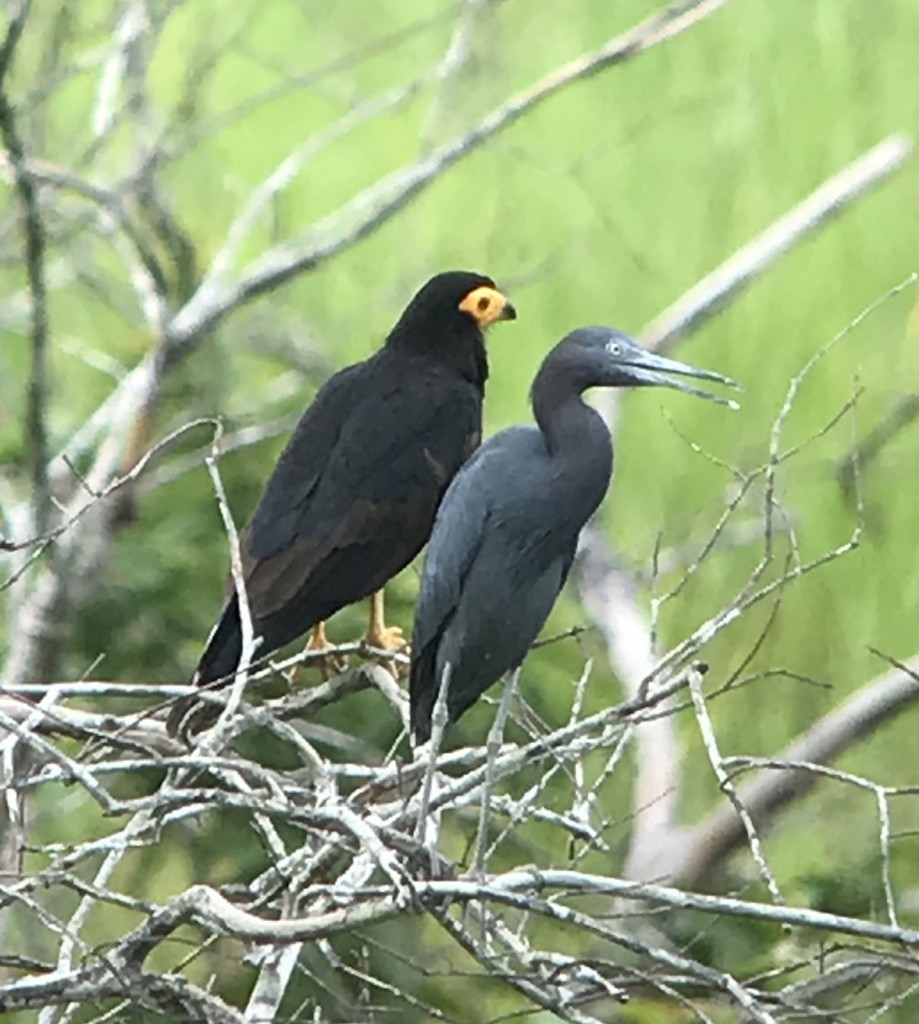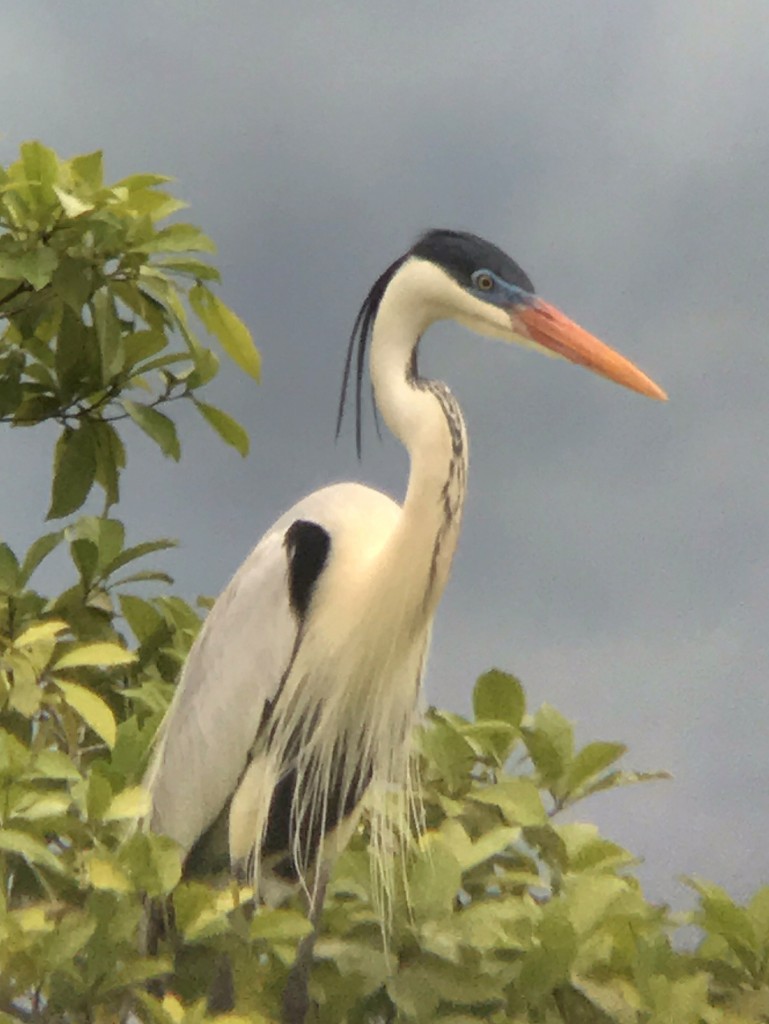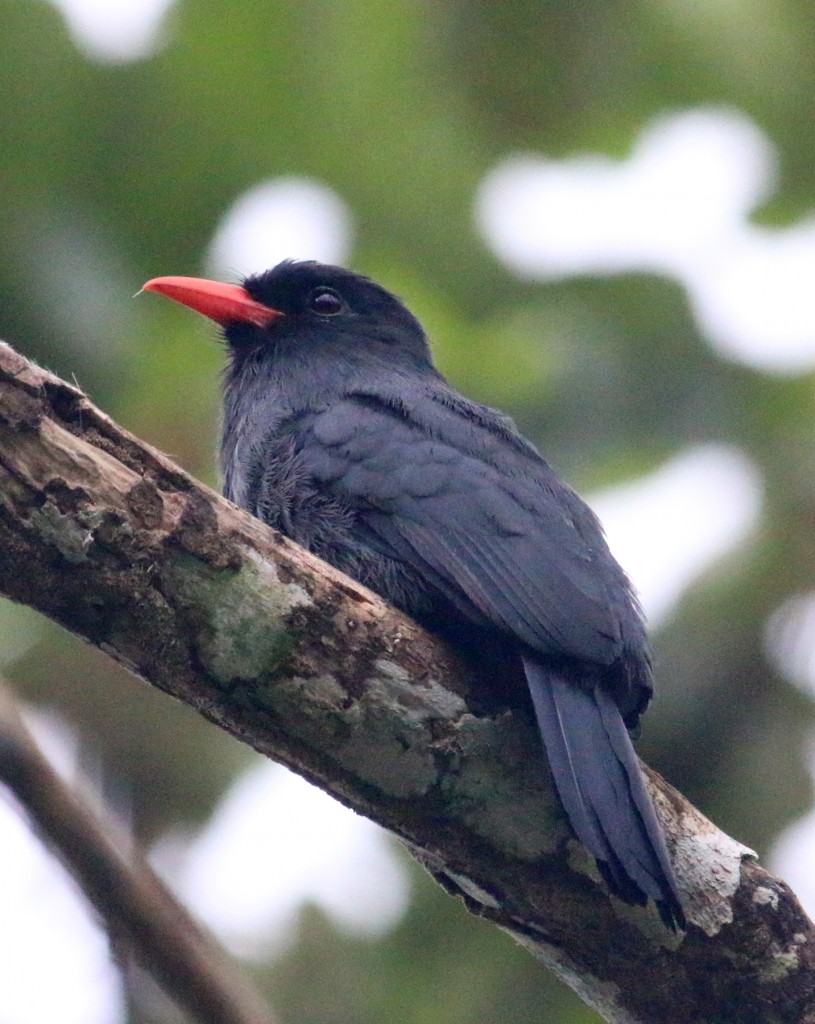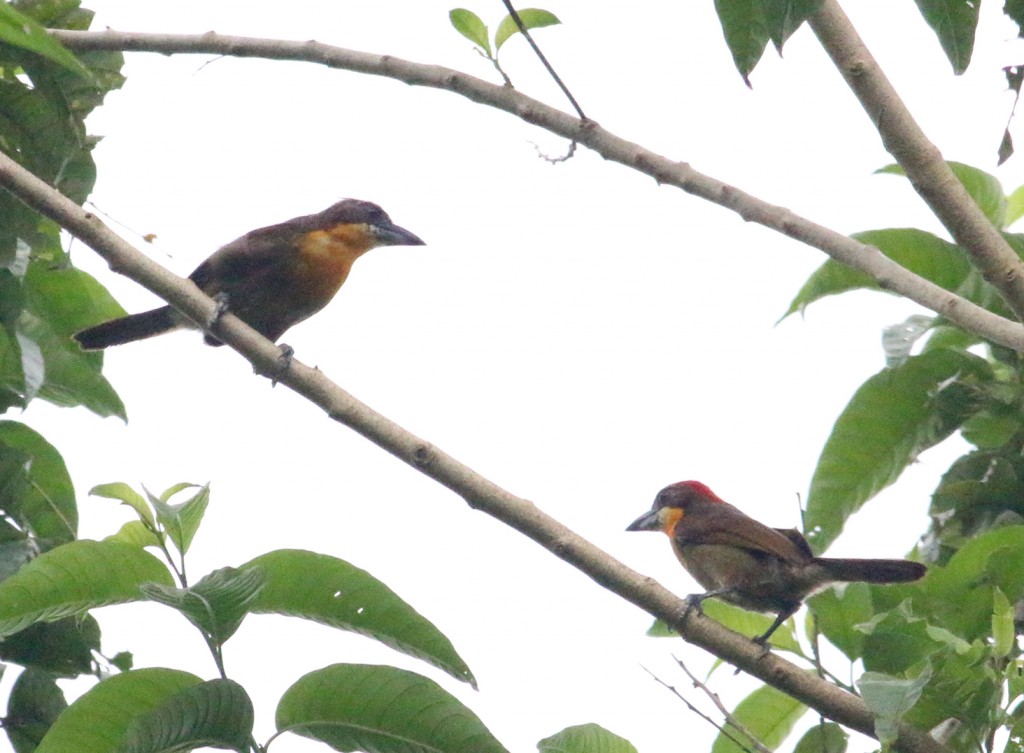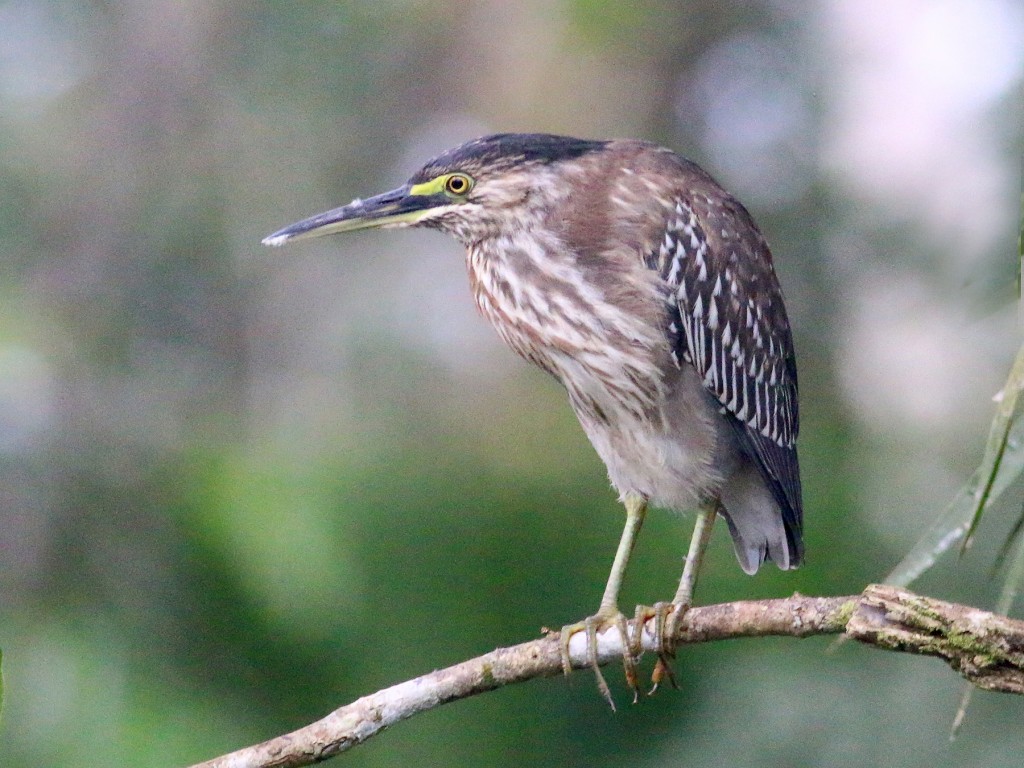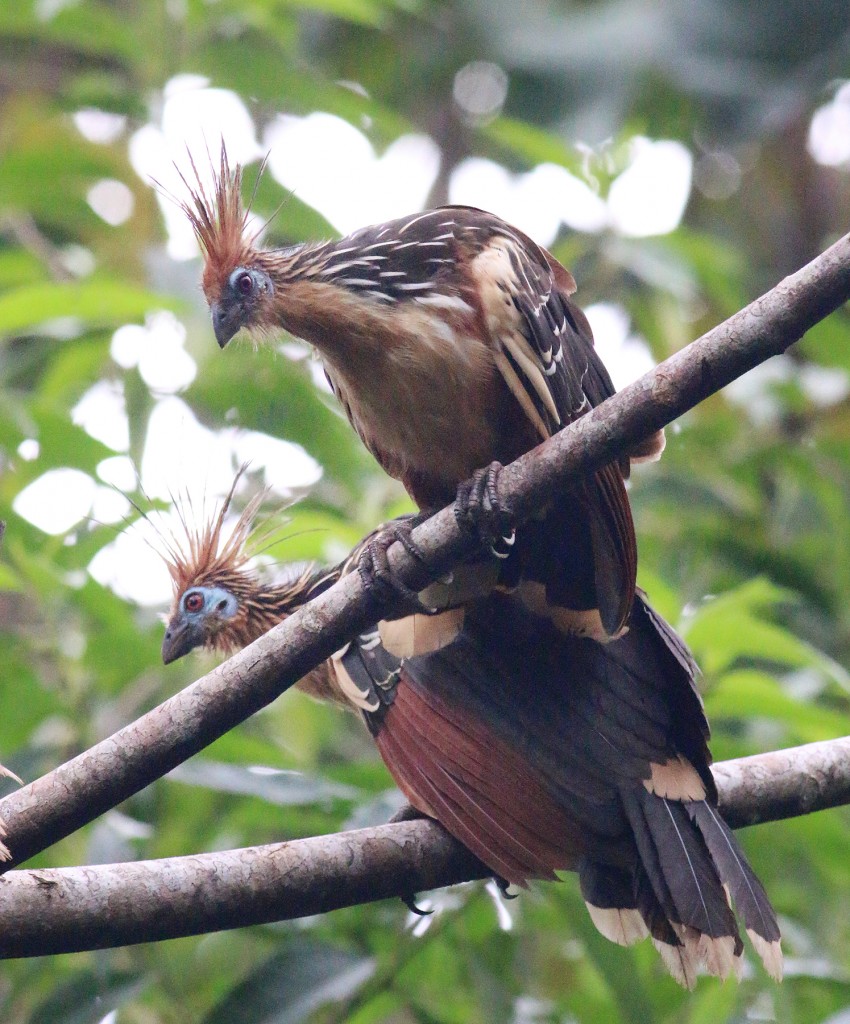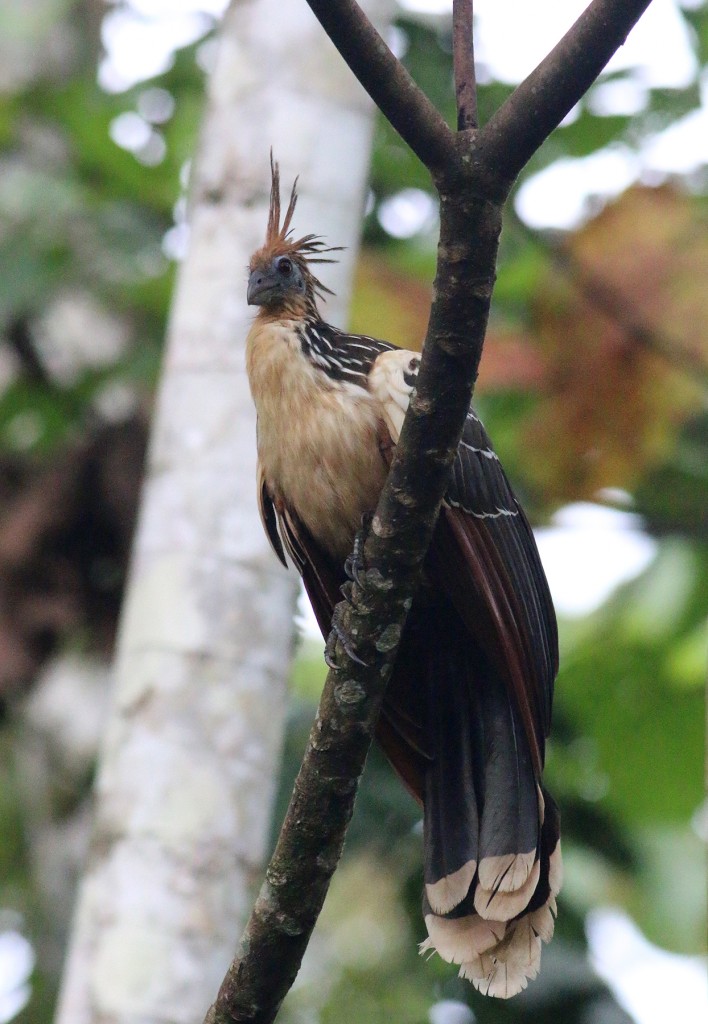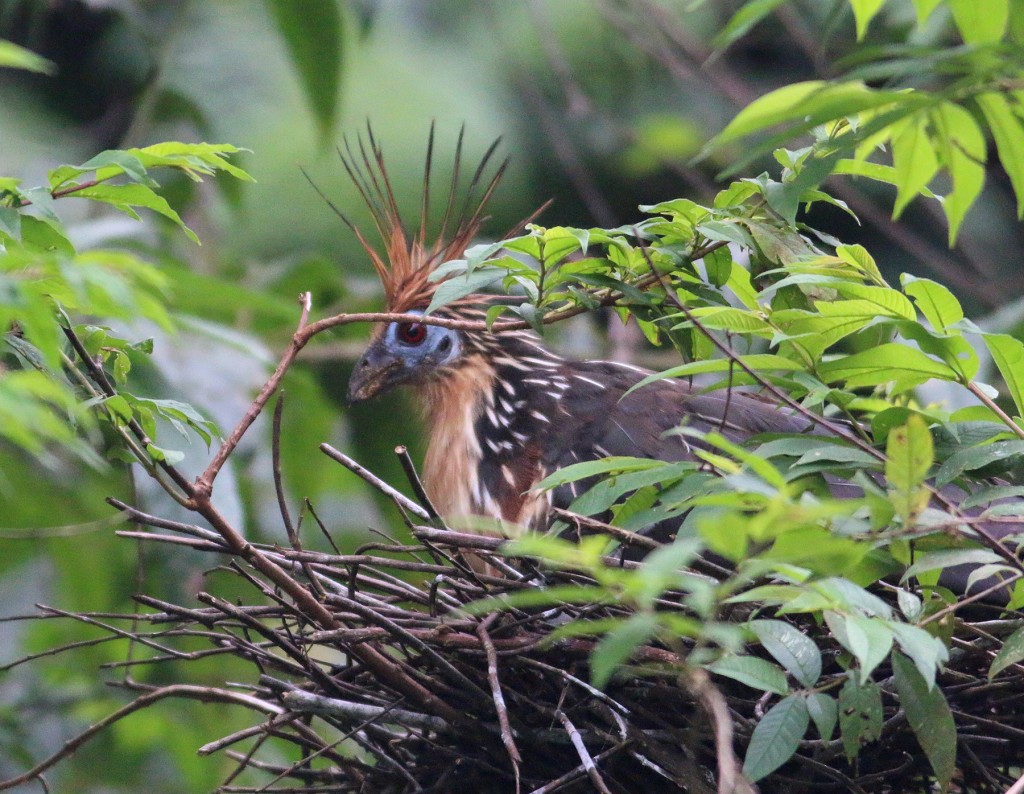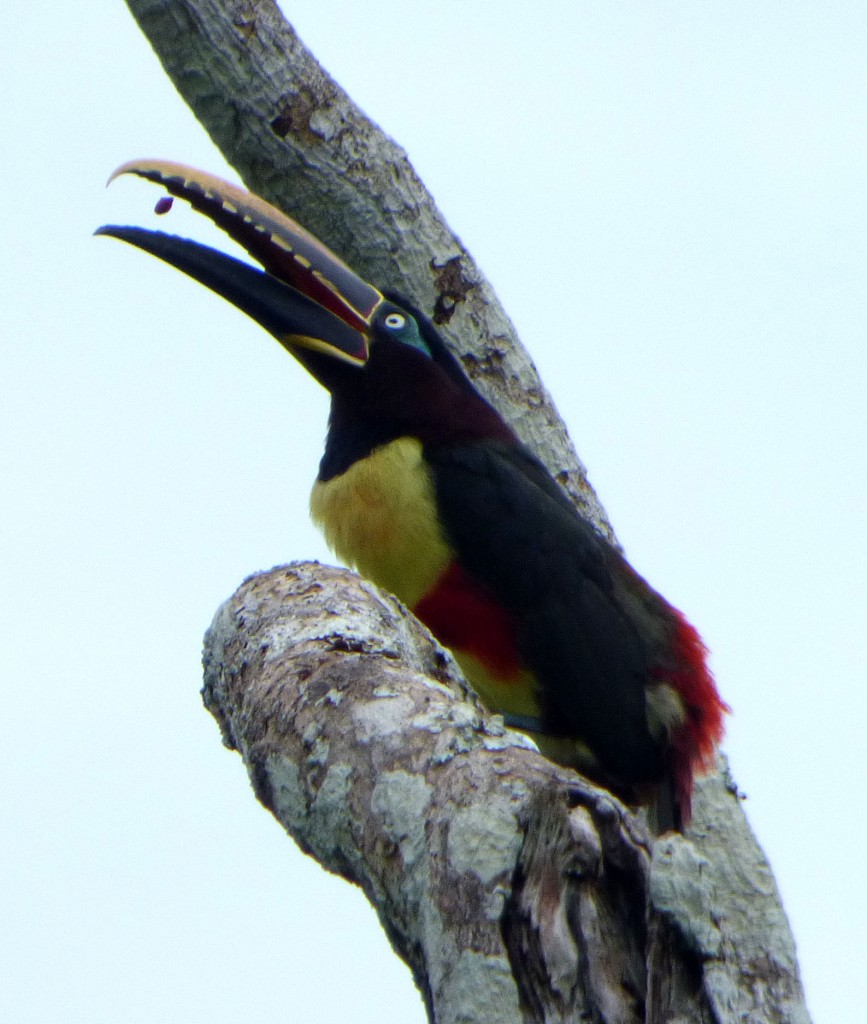On my previous trips to Ecuador we focused mainly on the mid-range altitudes, so on this trip we scheduled three days in the Napo River lowlands, hoping to find a new group of species. The Napo is a large tributary that eventually feeds into the Amazon River, but I hesitate to call the area that we visited ‘Amazonia’, which to me implies traveling downriver by boat to remote and untouched terrain. Due to time and budget constraints our goal was simply to get to a lower altitude by car and see as many convenient lowland species as possible.
We anticipated needing a break from birding after our first six days in Ecuador, so we scheduled a single night in Hosteria de las Orquideas, a comfortable roadside resort in Archidona, located around 1 1/2 hour drive from Wildsumaco Lodge at 1,900 ft elevation. We were very fortunate to make it to the resort without incident, as our gas tank was nearly empty so we covered quite a few miles rolling downhill in neutral gear. Here in the US we are used to having gas stations spaced at convenient intervals, but during our entire two weeks in Ecuador we only saw maybe three gas stations, so it is a good idea to keep the tank as filled as possible to avoid running on fumes like we did. Whew.
Hosteria Orquideas was nice, with spacious cabins and a large swimming area that Jeanine and I put to good use. The resort is also advertised as Isla de Los Monos (Isle of Monkeys), and we found out why, with wild monkeys roaming freely on the grounds and occasionally even in the dining area.
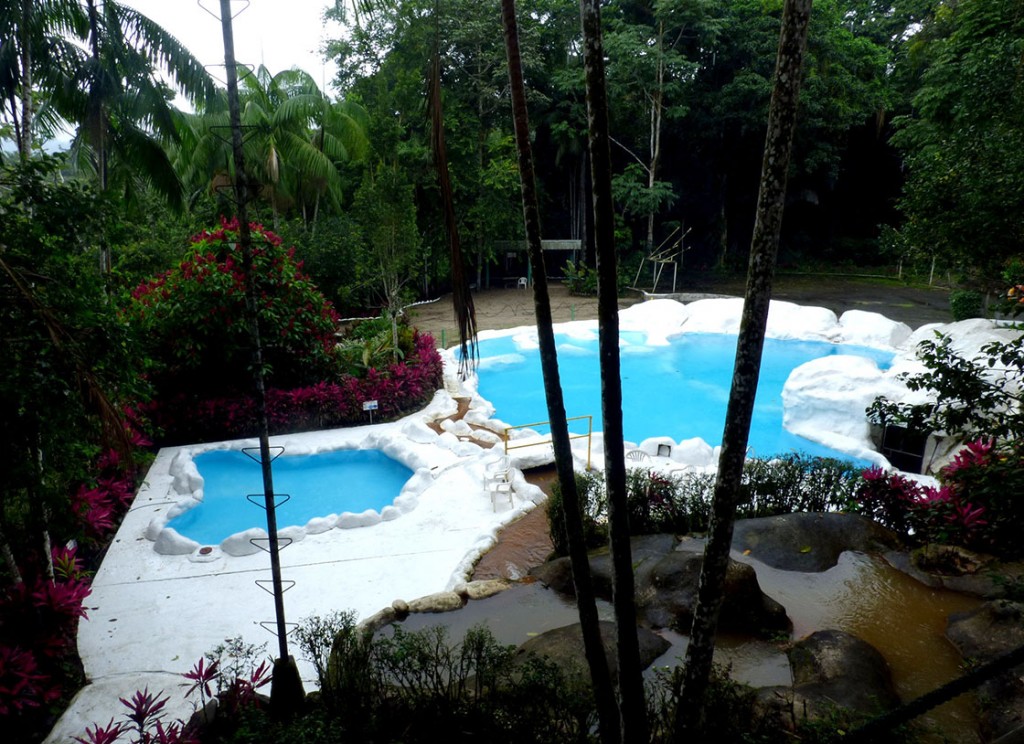
The pool at Hosteria de las Orquideas was a delightful distraction after six straight days of birding.
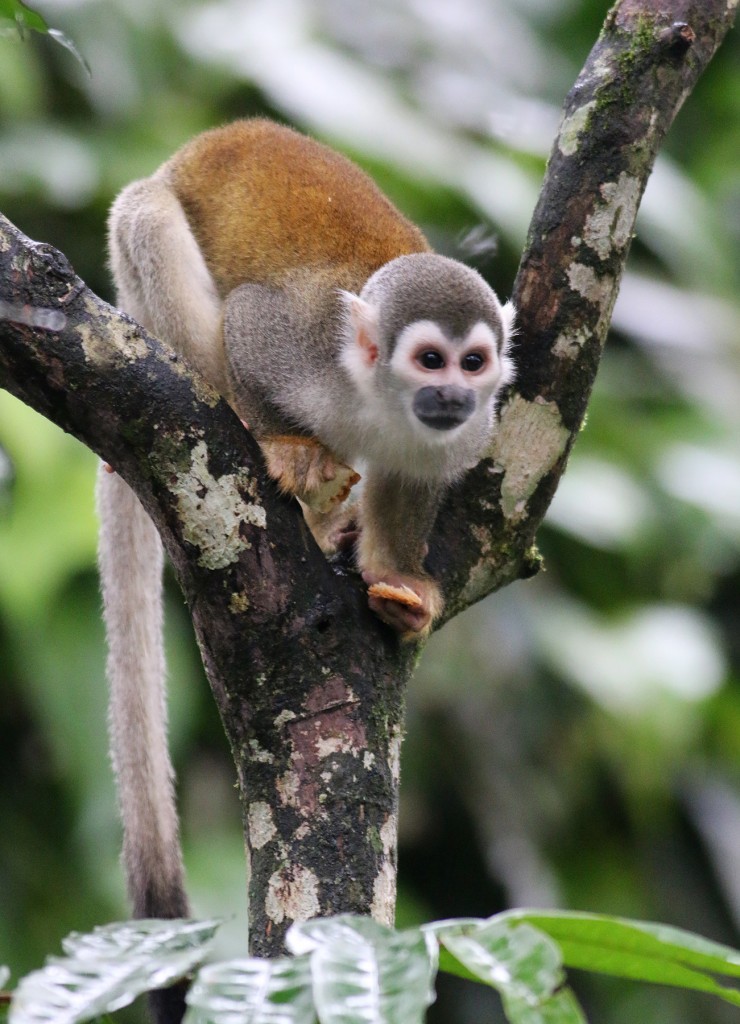
A large troop of Squirrel Monkeys came for handouts outside the dining area at Hosteria de las Orquideas.
We did try birding the grounds, but it started raining pretty hard, so we didn’t find too much new. Our best birding was along the river, where we spotted a Ringed Kingfisher (our first kingfisher of the trip), along with Lesser Swallow-tailed Swifts and calling Greater Kiskadees. We were anxious to get to lower and more remote territory, so instead of birding the resort grounds the next morning, we drove towards Puerto Misahualli and the Jatun Sacha Reserve (1,300 ft), stopping for a few minutes to scan at river crossings. In this way we found the lovely White-banded Swallows, Yellow-headed Caracara, Torrent Tyrannulets, Chestnut-bellied Seedeaters, Amazon Kingfisher, and large flock of White-collared Swifts.
We were scheduled to stay for two nights at the Jatun Sacha Tropical Rainforest Station, which is one of five properties run by the Jatun Sacha Foundation with the goals of preserving native forests, conducting research, and providing ecological education for the local people. I loved the atmosphere here, where we dined on simple food at long communal tables with the volunteers and students.
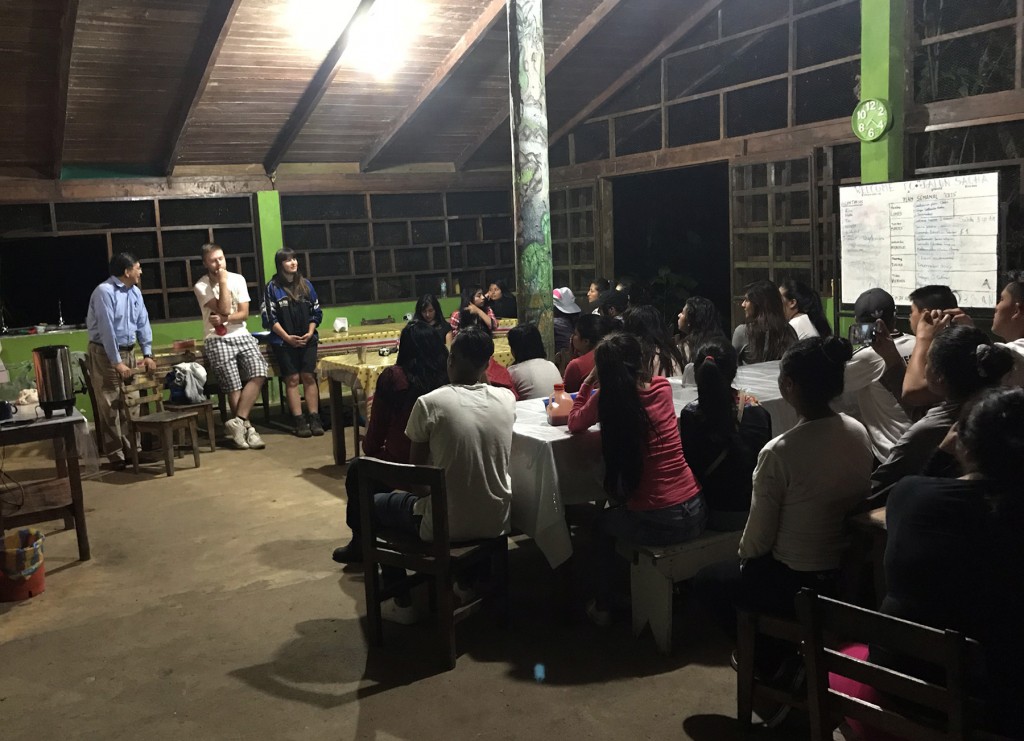
A busload of students arrived at Jatun Sacha for an overnight exploration. Here they get an opening night presentation in the dining area by the director of Jatun Sacha and a few volunteers.
I was very much looking forward to our first complete day at Jatun Sacha, which included a full day of guiding and an early morning visit to a parrot lick. I won’t go into details, but the day was very disappointing, with our guide Milton Orozco showing up nearly an hour late with no explanation or apology, leaving early, getting lost on the trail, and trying to overcharge us despite showing him e-mails with the quoted price. In addition, the trail that he took us on ended above the cliff where the parrots were supposed to mass, so we wouldn’t have been able to even see them on the clay. Since we arrived late, there were few parrots to see anyway, but this entire morning was a major disappointment.
We spent the remainder of the day with Joy, a volunteer from Germany, who had a day off from her volunteering duties. It was a treat to chat and visit with her, to learn about what volunteering was like, to hear about their projects, and to have her and the staff show us the grounds.
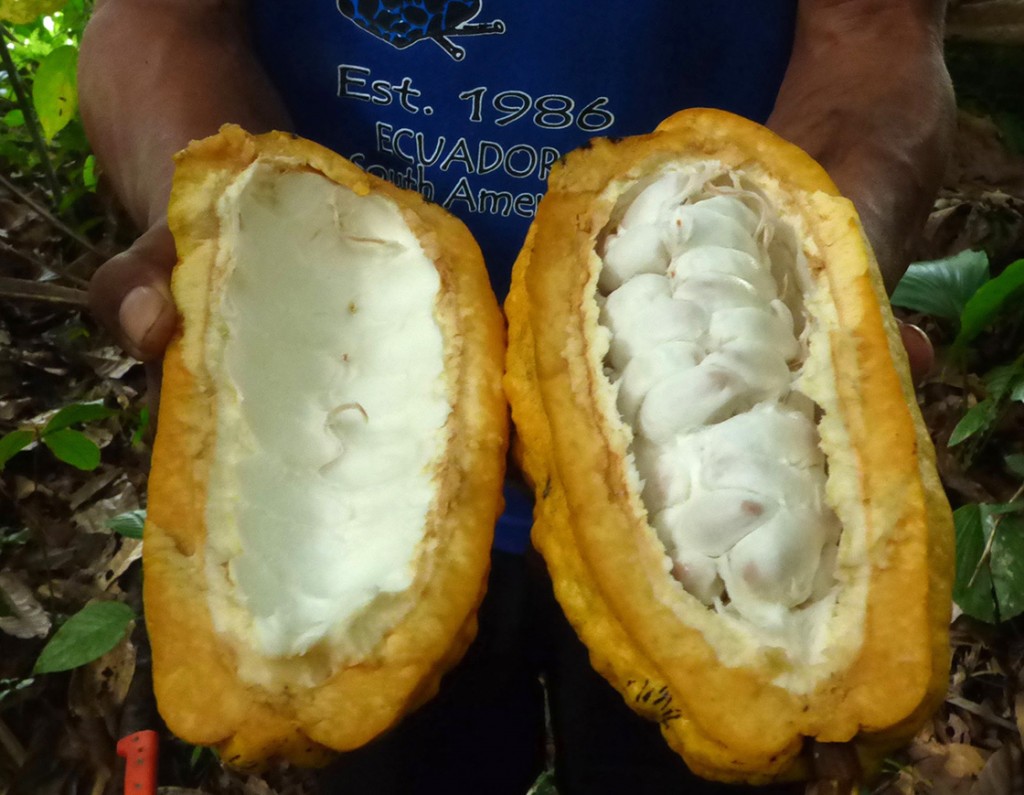
For all you chocolate lovers out there, this is a cacao fruit sliced open for us on the Jatun Sacha property. Those individual white ‘nuts’ had a somewhat slimy covering with a delicate chocolate flavor.
One of our more productive locations while at Jatun Sacha was a simple roadside hacienda that contained a few small watering holes just a short walk from the reserve. Stops here over the next two days yielded multiple new species for the trip, including Purple Gallinule, Wattled Jaçana, Bare-faced Ibis, Black Caracara, Cocoi Heron, Red-breasted Blackbird, Blue-black Grassquit, and Lesser Seed-finch.
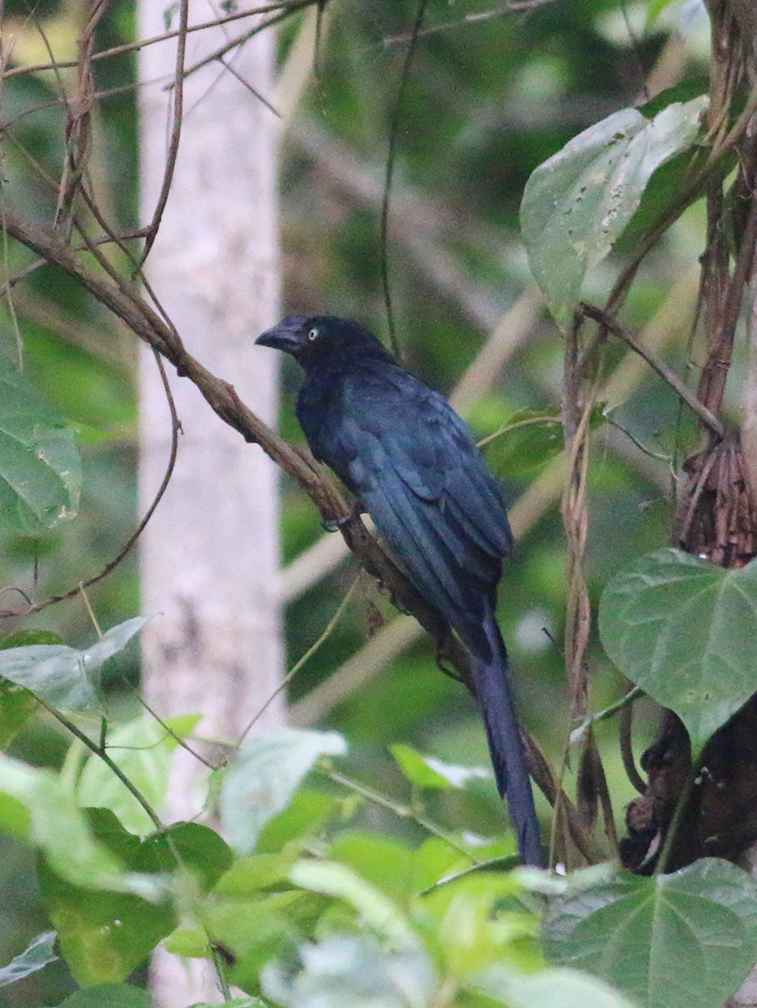
Greater Ani, which we saw at both Jatun Sacha and Laguna Paikawe. You can get a sense of how large and long-tailed and blue these birds are, especially when seen in flight or in better light.
In contrast to the disastrous day of guiding by Milton, the best part of our stay in the lowlands was a stop at Laguna Paikawe, a small lagoon with two islands just across the Napo River from Puerto Misahualli. The caretaker (owner?), Pedro Aguinda, paddles birders around the lagoon for perhaps an hour for only $5 per person. We had no appointment, but fortunately Pedro just finished a tour with two other birders when we arrived. The birding gods were smiling on us today! There were birds all over the lagoon…Pedro started by whistling in a Point-tailed Palmcreeper even before we entered the boat, and very soon afterward we were seeing Greater Ani, Striated Heron, Bare-necked Fruitcrows, Scarlet-crowned Barbets, Lemon-throated Barbets, Black-fronted Nunbird, Masked Crimson Tanager, a group of more than a dozen Hoatzins (including one on a nest!), and more. This boat tour gets my vote for the top highlight of our entire trip, and I encourage you to schedule a visit if you are in the area.
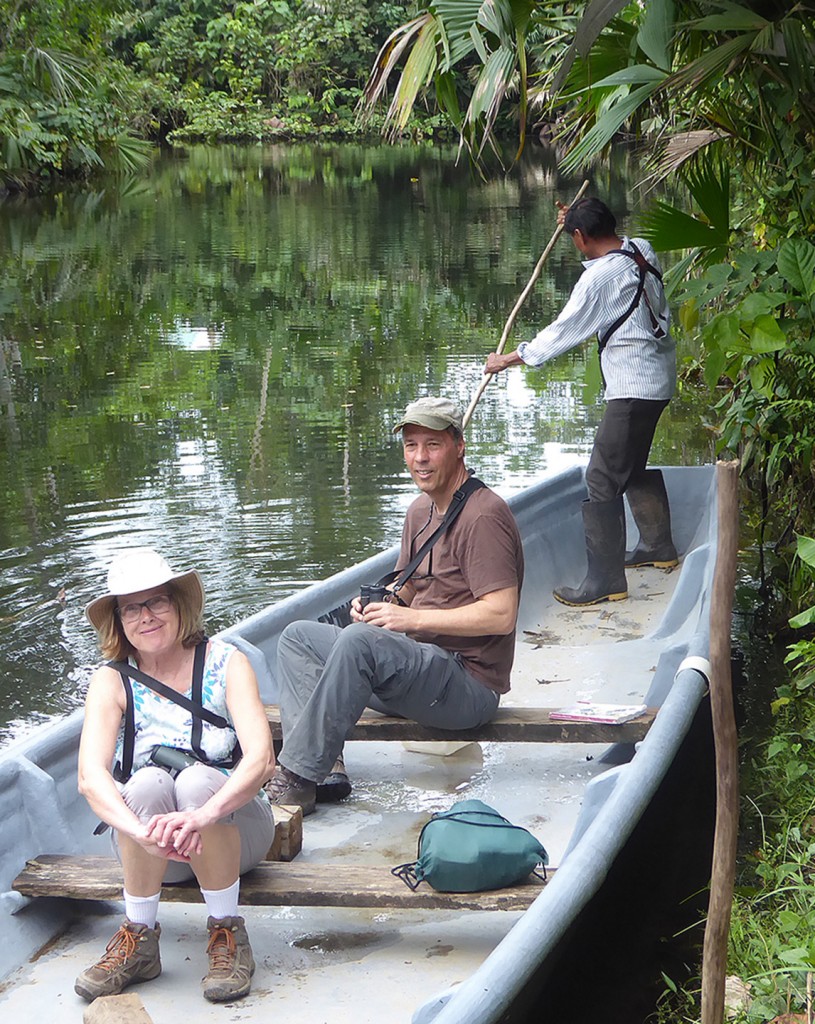
Pedro preparing to pole us around the laguna. I didn’t realize at the time what a treat this little tour would be.
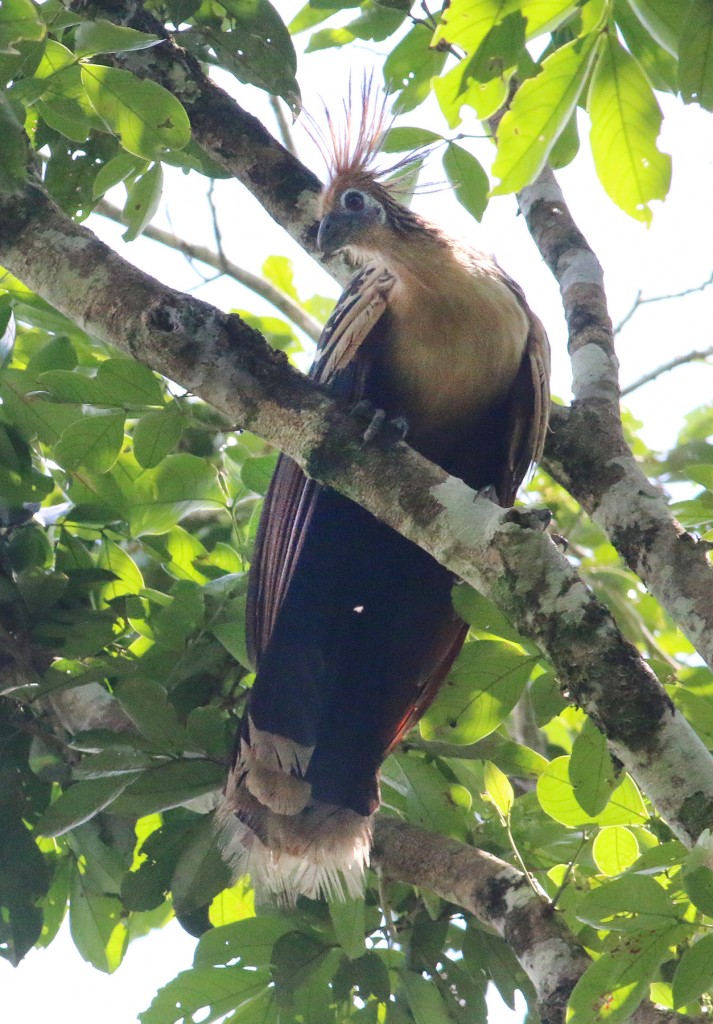
The enigmatic Hoatzin, perhaps my top target species for this trip. We found three in the treetops at Jatun Sacha, but then got great views of more than a dozen at Laguna Paikawe.
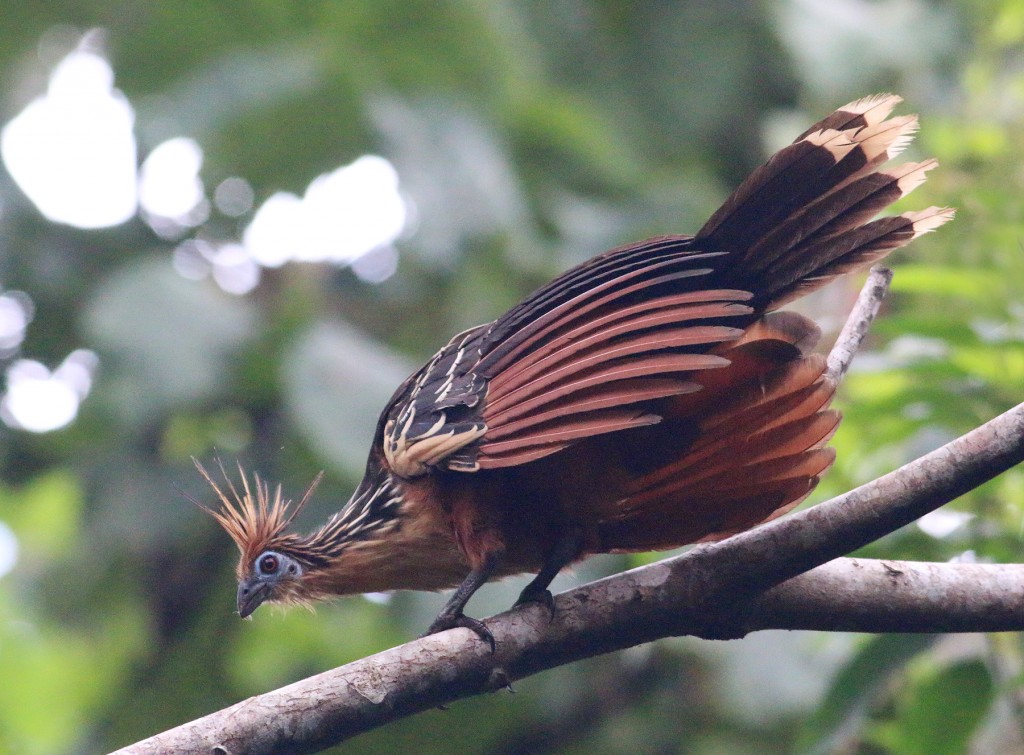
Hoatzins are such interesting birds. When you see them it is not surprising that they constitute their own separate family.
After leaving Pedro, we started the ~2 hour drive up to San Isidro Lodge, our home for the next three nights. Before leaving the lowlands, however, Jeanine spotted a nearby Chestnut-eared Araçari for our final ‘good’ lowland bird.
